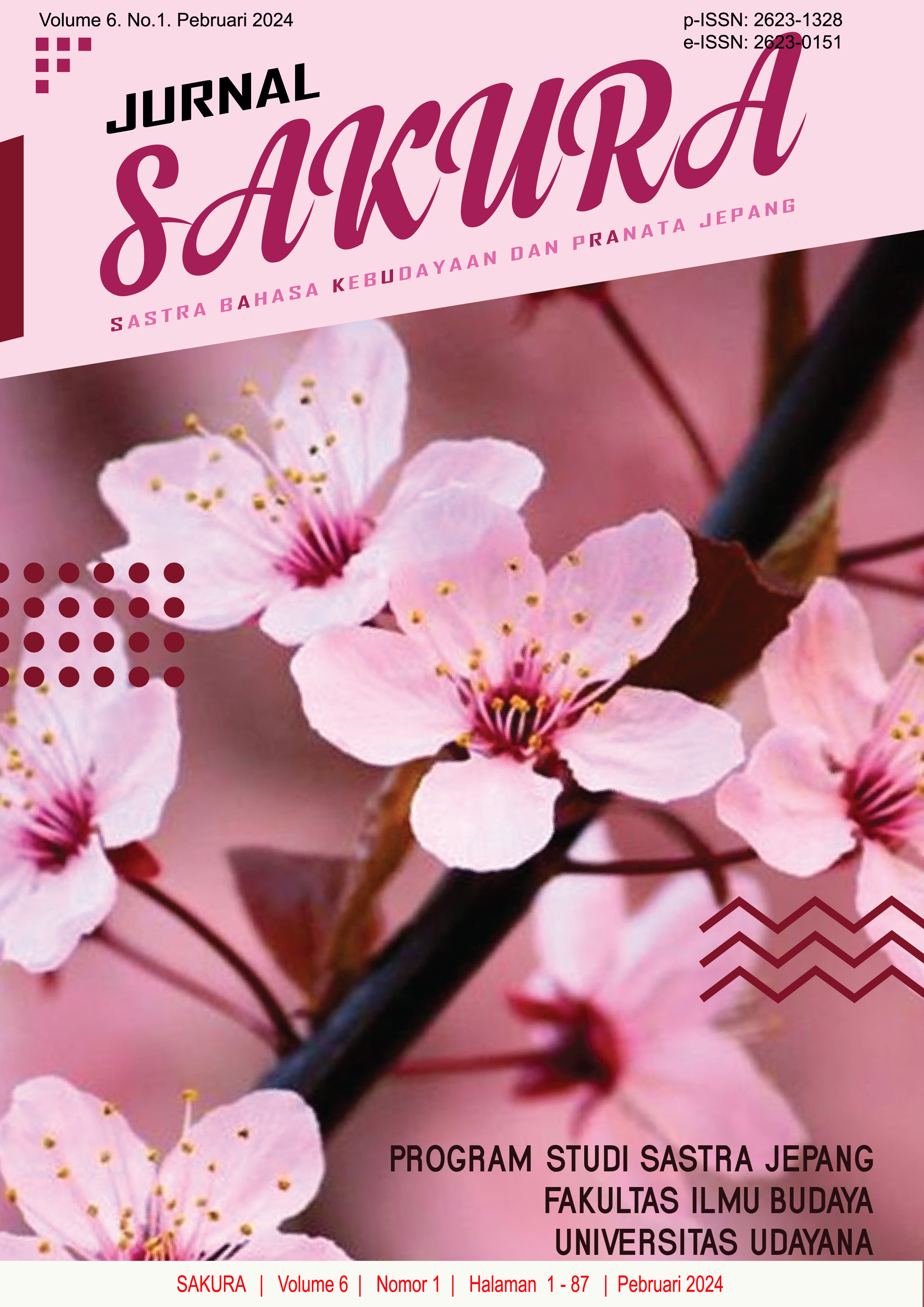Analisis Kesantunan pada Penggunaan Campur Kode oleh Mahasiswa Prodi Pendidikan Bahasa Jepang (Kajian Pragmatik)
Abstract
Politeness is essential in interaction to avoid conflict between the speaker and the hearer. This article describes politeness by students and lecturers in academic interaction at the Japanese Program in Undiksha. This study is qualitatively approached using pragmatics design. The data were collected using the technique of observation by listening, writing notes, and participating. The data was then, analyzed using an interactive model from Miles & Huberman. The data were classi?ed according to the face theory of Brown & Levinson i.e. strategy of positive politeness and ?rategy of negative politeness. Data analysis reveals positive politeness strategies and negative politeness strategies students use in academic interaction at the Japanese Program in Undiksha. Both methods contained a constituent such as code-mixing. The reason for using code mixing in speech between lecturer and students is not only from speech situation but most part because of politeness factor. Using code-mixing of the Indonesian language and Japanese, made the speaker comfortable speaking because the code-mixing can make the utterance still in polite mode and formal form.
Downloads
References
Brown, P., & Levinson, S. C. (1987). Politeness. Some Universals in Language Use. Cambrige: University Press.
Gabriela, P. (2004). Cross-cultural Pragmatic Failure and Implication for Language Teaching. ISST Vol 4.
Ide, S. (1982). Japanese Sociolinguistics Politeness and Women’s Language. Lingua 57. 357-385. North Holand Publishing Company.
Ide, S. (1989). Formal Forms and Discerment: Two Neglected Aspects of Universals of Linguistic Politeness. Multilingua 8-2/3. Hal. 223-248. Australia: De Gruyter Mouton.
Ide, S. (2006). Wakimae no Goyouron. Japan: Taishukan Shoten.
Leech, G. (2014). The Pragmatics of Politeness. Jericho: Oxford University Press.
Setiawan, H., & Rois, S. (2017). Wujud Kesantunan Berbahasa Guru: Studi Kasus di SD Immersion Ponorogo. Jurnal Penelitian Pendidikan Bahasa dan Sastra Indonesia, 3(2). Hal. 145-161.
Simpen, I. W., Mbete, A. M., Suastra, I. M., & Pastika, I. W. (2015). Kesantunan Berbahasa Pada Penutur Bahasa Kambera Di Sumba Timur. PhD Proposal, 1, 1–15.Tidak diterbitkan.
Tsujimura, T. 1991. Keigo no Youhou. Tokyo: Kadokawa Shoten.













